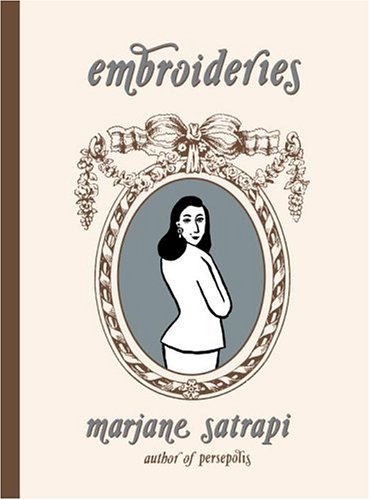Graphic Lit: Stuff I've missed

Trying to keep up with all the noteworthy comics and graphic novels — to say nothing of the manga — is a mug’s game.
There’s just too much stuff out there to keep track of, which is not to say that I don’t keep trying.
With that in mind, here are some reviews of books that for one reason or another, completely slipped through my fingers when they first hit stores a few months ago.
“Alias the Cat”
by Kim Deitch, Pantheon, 136 pages, $23.
I feel especially bad about ignoring this book for so long, if only because it’s such a rich, dense, visionary work of genius.
Like Deitch’s “Shadowland,” which came out last year, “Alias” blends dark tales of Americana with the 21st century as the discovery of a toy stuffed cat, that looks suspiciously like Deitch’s cartoon creation Waldo, leads the author on an almost psychedelic journey through the days of early movie serials, comic strips and eventually an abandoned town formerly populated by midgets.
Deitch is extremely adept at using characters to explore not only how culture has changed, but how we’ve paved over the richness of the past at our peril. It’s one of the best graphic novels you’ll read all year.
“Stop Forgetting to Remember”
by Peter Kuper, Crown Books, 208 pages, $19.95.

Kuper has been part of the indie comics scene for decades now, contributing for a variety of publications, including the “Spy vs. Spy” comics for Mad magazine.
It’s all the more sad, therefore, that his big graphic novel debut is such a disappointment.
In the book, Kuper chronicles the onset of parenthood in the ’90s while reminiscing about his childhood.
The result is a schizophrenic book that jumps around far too much for its own good; the sections don’t blend into a concise whole.
There are some masterful bits of cartooning but, in the end, it’s not enough to make “Remember” memorable.
“The Black Diamond Detective Agency”
by Eddie Campbell, First Second, 144 pages, $16.95.

Never one to rest on his laurels, in his latest book Campbell adapts an unproduced screenplay involving a man accused of engineering a bloody train wreck.
To reconnect to his shady past to clear his name, he inadvertently joins the same detective agency that’s hunting him.
Campbell throws himself into the book, providing some truly stellar sequences, most notably in the disaster that makes up the first few pages.
But the script feels rushed, so concerned with plot and explaining the main character’s dark history that many supporting players become ciphers who blend into the background.
It’s not a bad book, but it’s nowhere near the high watermark of last year’s “Fate of the Artist.”
“Lone Racer”
by Nicolas Mahler, Top Shelf, 98 pages, $12.95.

This is a charming little gem about a former car racer now down on his luck who attempts one last go-around at the track.
Mahler avoids the usual sports cliches, using absurdity, repetition and his extremely abstract cartoon style — his characters are all nose and hair and little else — to great humorous effect.
What’s impressive is, despite the lack of expression, how moved you eventually are by the racer’s plight.
It’s a sleeper of a book that deserves a wider audience.
“Harvey Comics Classics Vol. 1: Casper The Friendly Ghost,”

edited by Leslie Cabarga, Dark Horse Comics, 480 pages, $19.95.
It’s about time someone made an effort to collect these comics. Despite the general dullness of most of the Casper animated cartoons, the comics themselves showed a lot of skill and imagination, eventually eschewing the “Eek, it’s a ghost” scenario to create a creative cast of characters for Casper to interact with.
True, these comics aren’t as strong as some of the true children’s classics like Carl Barks’ “Donald Duck” stories or John Stanley’s “Little Lulu” tales. Nevertheless, they’ve held up surprisingly well over the years.
Perhaps the best recommendation I can give is that my five-year-old daughter immediately picked up this book when I brought it home and has barely been able to put it down since.
I better get it back to her quickly.
Copyright The Patriot-News, 2007
Labels: comics, kids comics











